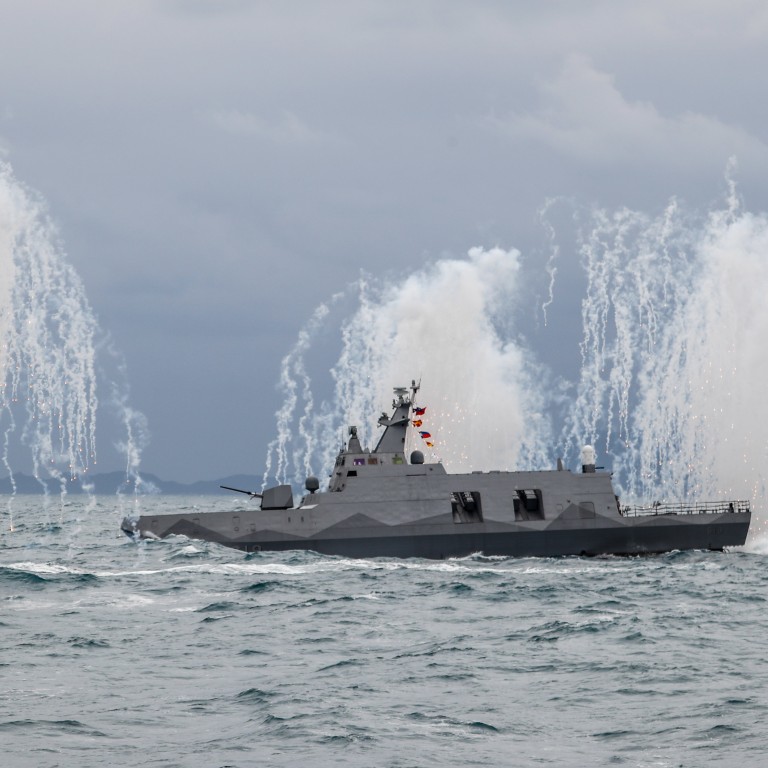
As PLA threat grows, Taiwan’s bid to boost defence ‘may lead to conflict’
- Mainland analyst says extra military spending will only add to tensions and ‘is likely to increase the risk of misjudgment’
- Funds will be used for precision and long-range missiles as well as naval ships to strengthen the island’s air and sea defences
The additional funds will be used to mass-produce precision and long-range missiles as well as naval ships to boost the island’s air and sea defences, according to the defence ministry’s budget report.
It also includes a coastal anti-ship missiles system, cruise missiles, an attack drone project, and a combat weapons system for the island’s coastguard.
Under growing pressure, Tsai – who has said Taiwan would not give in to threats – has sought to modernise the island’s military. That started a month after she took office, when Taiwan’s navy announced new shipbuilding and modernisation programmes spanning 23 years at a cost of about US$14.7 billion.
But according to Zhu Songling, a professor with the Institute of Taiwan Studies at Beijing Union University, Taiwan’s latest move to strengthen its military will only add to tensions.
“This is likely to increase the risk of misjudgment between the two sides, which could lead to a real conflict,” Zhu said. “It might even cause misjudgment between China and the United States over the Taiwan issue, and that could result in a crisis.”
Military commentator and former PLA instructor Song Zhongping said Taiwan’s armed forces would never be able to match the development of the PLA. He said the island would rely on American support to counter Beijing, but that would damage China-US relations.
Inside Taiwan’s brutal frogman boot camp as island trains marines for war
A state-run mainland Chinese military magazine has meanwhile cast doubt on Taiwan’s ambitious shipbuilding programme – which includes destroyers, frigates, submarines, landing platform docks and missile corvettes. The article in Naval & Merchant Ships early this month said it amounted to a plan to build a whole new navy for the island and suggested it would not be able to cover the huge costs involved. It also claimed Taiwan did not have the design and other experience to build major warships, saying none had been built on the island since the 1990s.
But Andrew Yang Nien-dzu, a former Taiwanese defence minister, said the island’s military plan was solid.
“The Taiwan Strait is narrow and shore-based defence capabilities should be strengthened,” he said. “But Taiwan is an island that also has to consider how to protect its eastern shores, which face the Pacific. In this regard, Taiwan needs more vessels to counter different situations.”

